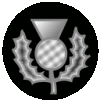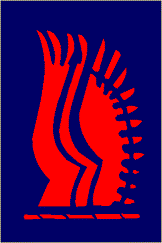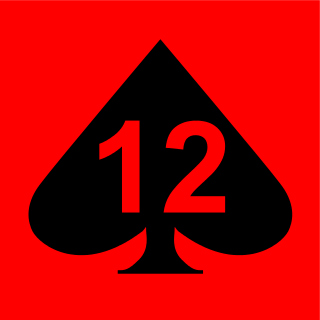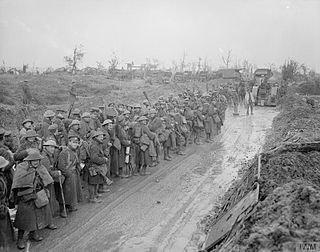Related Research Articles

The 9th (Scottish) Division, was an infantry division of the British Army during the First World War, one of the Kitchener's Army divisions raised from volunteers by Lord Kitchener to serve on the Western Front during the First World War.

The 10th (Irish) Division, was one of the first of Kitchener's New Army K1 Army Group divisions, authorized on 21 August 1914, after the outbreak of the Great War. It included battalions from the various provinces of Ireland. It was led by Irish General Bryan Mahon and fought at Gallipoli, Salonika and Palestine. It was the first of the Irish Divisions to take to the field and was the most travelled of the Irish formations. The division served as a formation of the United Kingdom's British Army during World War I.
The 27th Division was an infantry division of the British Army raised during the Great War, formed in late 1914 by combining various Regular Army units that had been acting as garrisons about the British Empire. The division spent most of 1915 on the Western Front in France before moving to Salonika where it remained with the British Salonika Army for the duration of the war. In 1916 its commander Hurdis Ravenshaw was captured by an Austrian submarine whilst sailing to England. In 1918 in Salonika the division took part in the Battle of Doiran. It carried out occupation duties in the Caucasus in the post-war before being withdrawn from the region in 1919.

The 23rd Infantry Brigade was an infantry brigade of the British Army that saw active service in the First World War, mainly on the Western Front During the Second World War, the brigade saw active service in the Syria-Lebanon Campaign, the Western Desert Campaign, and the Burma Campaign.

The 15th Infantry Brigade, later 15 Brigade, was an infantry brigade of the British Army. It was part of the regular 5th Infantry Division during the First World War and Second World War, and was subsequently part of the 2nd Infantry Division in the north of the United Kingdom, with specific responsibility for the areas of North East England and Yorkshire and the Humber.

The 24th Infantry Brigade was an infantry brigade of the British Army from the First World War. It was reraised during the Second World War, as the 24th Infantry Brigade (Guards). During various designations, the brigade was active throughout the Cold War and existed until 1999, when it was merged with the 5 Airborne Brigade to become 16 Air Assault Brigade.

The 56th Infantry Brigade was an infantry brigade of the British Army that saw active service in both the First and the Second World Wars.
The 13th Infantry Brigade was a regular infantry brigade of the British Army that saw active service during both the First and the Second World Wars.

The 2nd Infantry Brigade was a regional brigade of the British Army, active since before the First World War. It was the regional formation of the Army in the South East of England–the Brigade commanded and administered soldiers throughout Kent, Surrey and Sussex–but also Brunei. In December 2014 the Brigade merged with 145 (South) Brigade to form Headquarters 11th Infantry Brigade and Headquarters South East.
The 18th Infantry Brigade was an infantry brigade of the British Army that saw active service during the First and the Second World Wars.

The 12th Armoured Brigade Combat Team, formerly the 12th Armoured Infantry Brigade, is a regular brigade of the British Army which has been in almost continuous existence since 1899 and now forms part of 3rd Division.

The 3rd Infantry Brigade was a Regular Army infantry brigade of the British Army, part of the 1st Infantry Division. Originally formed in 1809, during the Peninsular War, the brigade had a long history, seeing action in the Second Anglo-Afghan War, and during both the First and the Second World Wars.
The 10th Infantry Brigade was a Regular Army infantry brigade of the British Army formed during the Second Boer War in 5th Division, and during both World Wars the brigade was part of the 4th Infantry Division.
The 26th Infantry Brigade was the name of two British Army formations during the First World War and Second World War.

The 27th Infantry Brigade was an infantry brigade of the British Army that saw service in the First World War, the Second World War, and the Korean War. In Korea, the brigade was known as 27th British Commonwealth Brigade due to the addition of Canadian, Australian, New Zealand and Indian units.

The 29th Infantry Brigade was an infantry brigade unit of the British Army. It was originally raised in 1914 and saw service during the First and Second World Wars and the Korean War.
The 8th Infantry Brigade was an infantry brigade of the British Army that saw active service in both the First and the Second World Wars, before being disbanded and reactivated in the 1960s. The brigade was finally being disbanded in 2006. It was formed before the First World War as part of the 3rd Division. As part of that division it spent the entire war on the Western Front from 1914 to 1918 in the First World War. The brigade was also active during the Second World War.

The 127th (Manchester) Brigade was an infantry brigade of the British Army that saw active service during both the First and Second World Wars. It was assigned to the 42nd Division and served in the Middle East and on the Western Front in the First World War.

The 87th Brigade was an infantry brigade formation of the British Army that saw service in World War I. It was originally formed in 1915 from four Regular Army battalions serving away from home in numerous parts of the British Empire. Its first commander was General W.R. Marshall, with C.H.T.Lucas taking command in August 1915. The brigade was assigned to the 29th Division and served in the Gallipoli Campaign from 1915 - 1916, preceding a short time in the Middle Eastern theatre, later being sent to the Western Front in time to attack at Beaumont Hamel on July 1, 1916, and remaining on that front for the rest of the war.

The 88th Brigade was an infantry brigade formation of the British Army, raised for service in the First World War. It was originally formed from regular army battalions serving away from home in the British Empire. The brigade was assigned to the 29th Division and served on the Western Front and the Gallipoli Campaign and in the Middle East.
References
- ↑ "27th Division". The Long Long Trail. Retrieved 20 January 2012.